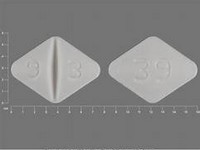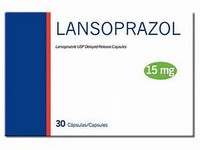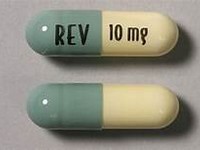idarubicin hydrochloride

idarubicin hydrochloride
CLINICAL USE
Antineoplastic agent:Acute non-lymphoblastic leukaemia (ANLL)2nd line for acute lymphoblastic leukaemia (ALL), breast cancer With other cytotoxic agents in combination chemotherapy regimensDOSE IN NORMAL RENAL FUNCTION
IV: ANLL: 12 mg/m —2 daily for 3 days in combination with cytarabine, or 8 mg/m2 daily for 5 days with or without combination therapyALL: 12 mg/m —2 daily for 3 daysOral: ANLL: 30 mg/m —2 daily for 3 days as a single agent, or 15–30 mg/m2 daily for 3 days in combination with other anti-leukaemic agentsBreast cancer: 45 mg/m 2 given either as a single dose or divided over 3 consecutive days every 3–4 weeksMaximum cumulative dose is 400 mg/m 2 dailyOr see local protocolPHARMACOKINETICS
DOSE IN RENAL IMPAIRMENT
GFR (mL/MIN)
DOSE IN PATIENTS UNDERGOING RENAL REPLACEMENT THERAPIES
IMPORTANT DRUG INTERACTIONS
Potentially hazardous interactions with other drugsOther myelosuppressant medication and radiotherapy: increased risk of myelosuppressionADMINISTRATION
Reconstition
5 mL water for injection per 5 mgRoute
IV, oral, intravesicalRate of Administration
Give via the tubing of a fast running intravenous infusion of sodium chloride 0.9% or glucose 5%, over 5–10 minutesComments
Incompatible with alkaline solutions and heparinReconstituted solution is physically and chemically stable for 7 days at 2–8°C and 72 hours at room temperatureDoes not contain any antibacterial preservative so maximum recommended stability is 24 hoursOTHER INFORMATION
May cause the urine to become red for 1–2 days after administrationMetabolised to an active metabolite, idarubicinol, which has a half-life of 33–60 hours (oral), 41–69 (IV). It is eliminated by renal and hepatobiliary excretionidarubicin hydrochloride.370 IDARUbICIN HYDROCHLORIDeOral bioavailability is 18–39%, 29–58% for idarubicinol17% (IV)/8% (oral) is recovered in the faeces over 5 days and 16% (IV)/5% (oral) is recovered in the urine over 4 daysA phase II study instilled 6.25–12.5 mg of idarubicin diluted in 45 mL of sodium chloride 0.9% (0.125–0.25 mg/mL) into the bladder of patients with resected recurrent bladder cancer although it may not be any more effective than doxorubicin or epirubicin and toxicity may limit its use.
See how to identify renal failure stages according to GFR calculation
See how to diagnose irreversible renal disease
Home








